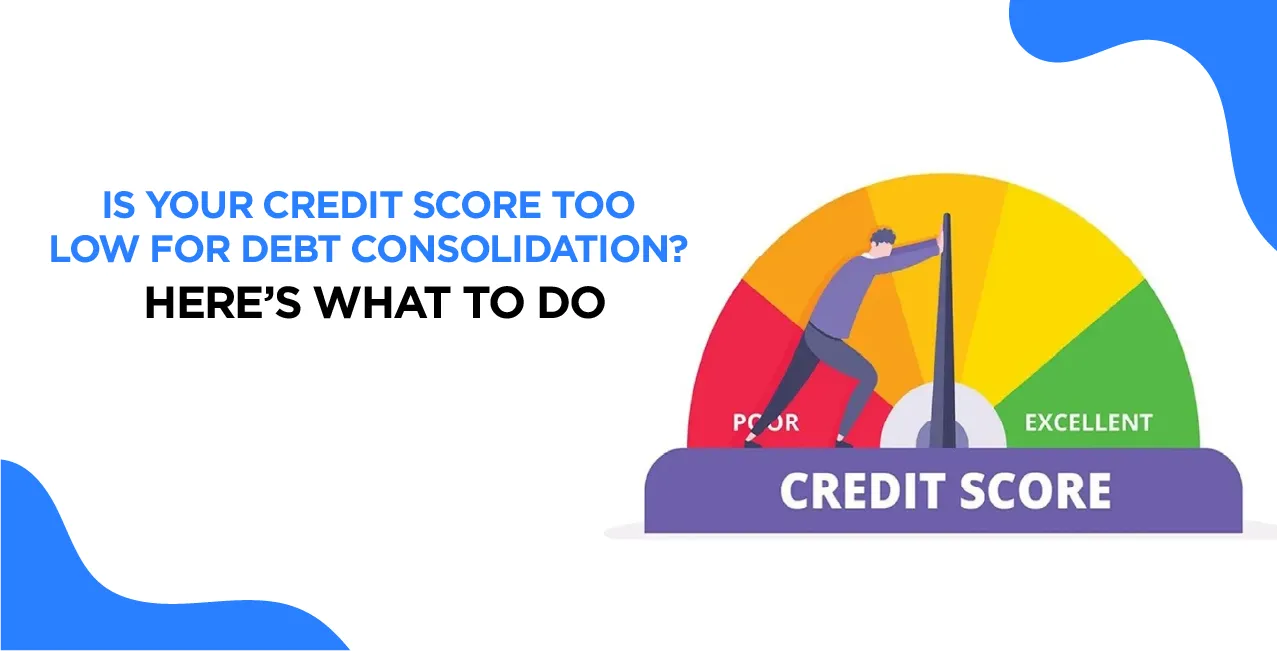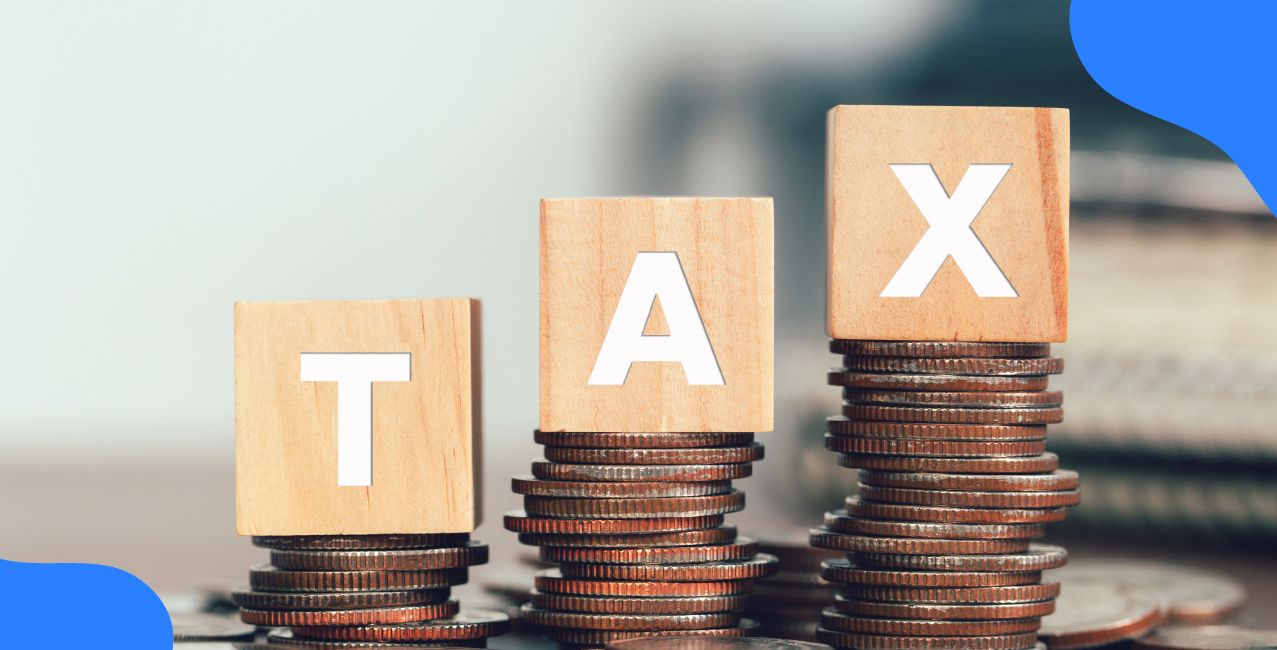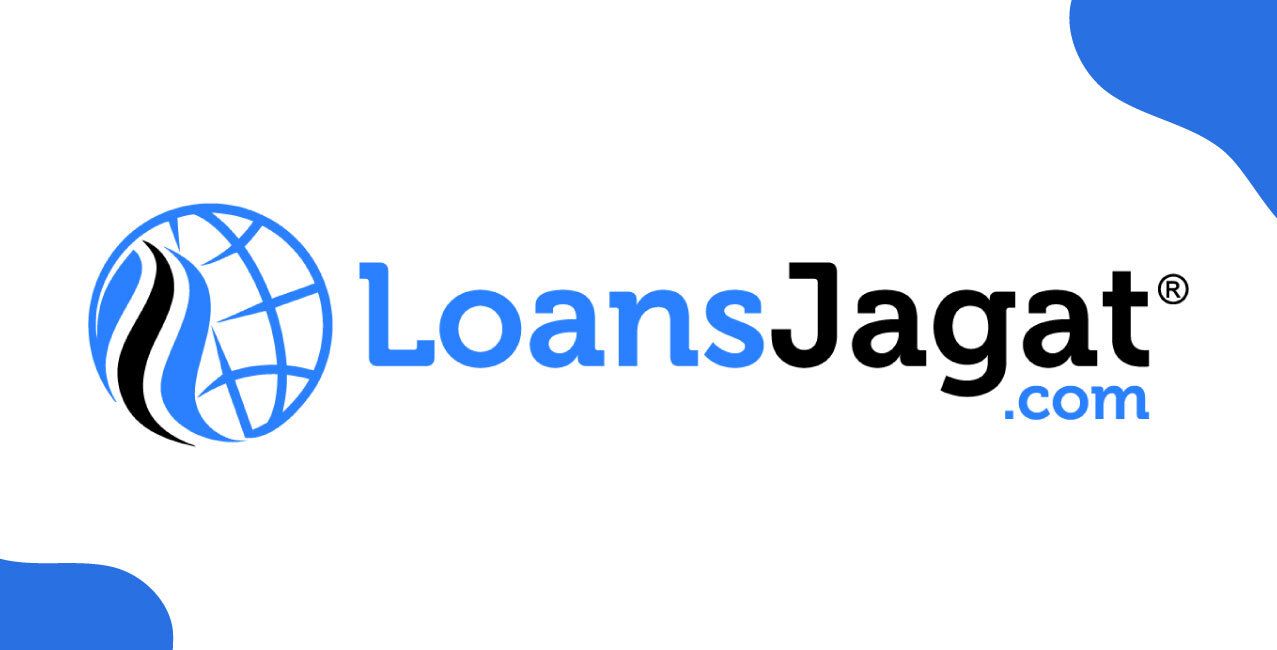
Author
LoansJagat Team
Read Time
8 Min
09 Apr 2025
Is Your Credit Score Too Low for Debt Consolidation? Here’s What to Do
By 2025, the average household is struggling with at least 2.7 loans. Crazy, right? But let’s be honest, how can a middle-class family afford a ₹1 crore+ home and a ₹10 lakh+ car just from their salary? Do you know that a decent private school education costs over ₹1.7 lakh a year?
It’s nearly impossible to lead a life that we want without financial help. Loans have become a way of life, not just an option.
Every loan comes with interest, and you have to pay it back. Interest rates depend on many things, like who’s lending you the money, your financial discipline, and most importantly, your credit score. If your score is 750+, banks will roll out the red carpet for you.
But what if it’s lower? Like, below 600? Have you ever thought about that?
For example, Riya, 29, had ₹7,45,000 in debt across 3 credit cards and 2 personal loans. Banks denied her any further loans due to a 580 credit score.
She corrected 3 credit report errors, approached an NBFC, and added a guarantor with a 780 score.
Finally, she secured a ₹6,00,000 consolidation loan at 18% interest. The rate is high, but it reduced her monthly payments from ₹42,000 to ₹28,500.
Aspect | Before Consolidation | After Consolidation | Outcome (2.5 Years) |
Total Debt | ₹7,45,000 (5 debts) | ₹6,00,000 (single loan at 18%) | ₹0 |
Monthly Payment | ₹42,000 | ₹28,500 | Savings rate increased by 40% |
Credit Score | 580 (rejected by banks) | 600 (errors fixed + guarantor added) | 750+ |
Key Steps | - 85% credit utilisation - Multiple loans | - NBFC loan with guarantor - Lowered EMI | - Timely payments - Utilization <30% |
Total Interest | ₹2.1L/year (estimated) | ₹2.55L total (over 2.5 years) | Saved ₹3.9L vs. continuing old debts |
Riya did a couple of things to consolidate all her past debts. It was a struggle in itself, but she reduced her monthly payment and paid what she owed. Like her, you can also be debt-free, no matter your credit score. Let’s learn more about it in this blog.
Can You Get a Debt Consolidation Loan with a Credit Score Below 600?
Banks have always supported people like Ramesh when they needed financial assistance. But who exactly are ‘people like Ramesh’? What makes him unique? It’s simple: his strong financial discipline, clean credit history, and, most importantly, a high credit score.
Banks trust that their money is safe with them and will return with interest.
But let’s be honest—not everyone is Ramesh. For people like us, NBFCs (Non-Banking Financial Companies) and fintech platforms step in. They serve borrowers with less-than-perfect financial records, offering a second chance when banks say no.
Read More – Why Isn't Your CIBIL Score Improving?
Traditional Banks vs. NBFCs & Fintech Lenders
With the help of the table, you can analyse the differences between traditional banks, NBFCs, and Fintech Lenders.
Factor | Traditional Banks (Not Helpful for Poor Credit) | NBFCs (More Flexible) | Fintech Lenders (Easiest Approval) |
Loan Approval | It is very difficult with a low credit score | Possible with lower scores | AI-based considers alternative data |
Credit Score Requirement | 750+ for good terms, below 600 often rejected | 600+ accepted; below 600 possible with conditions | No fixed requirement considers spending habits |
Income Proof | Strict requirements (salary slips, ITR) | Flexible (bank statements, business income) | May approve based on UPI and transaction history |
Collateral Requirement | Often required for large loans | Mostly unsecured loans | Mostly unsecured loans |
Interest Rates | Low for high-credit borrowers, high for low-score borrowers | Higher than banks but flexible | Highest but accessible to all |
Processing Time | Long (weeks due to strict verification) | Faster (days, minimal verification) | Instant (minutes to hours) |
Rejection Reasons | Low score, past defaults, unstable income | Case-by-case basis | Considers overall financial behaviour |
Loan Amount Flexibility | Strict eligibility limits | Offers small to medium loans easily | Very flexible, short-term loans available |
Customer Experience | Heavy paperwork | Hybrid (digital + physical) | Fully digital |
How to Improve Your Chances of Getting a Loan with a Low Credit Score?
As you’ve seen, platforms are willing to offer consolidation loans even if your credit score isn’t perfect. However, these loans often have drawbacks, such as high interest rates. So, what can you do to secure the best deal? Let’s talk about it.
1. Apply with a Co-Applicant or Guarantor
If your credit score is below 600, don’t worry; you can still improve your chances of getting a loan. How? By bringing in someone with a more substantial financial profile, like a co-applicant or a guarantor.
A co-applicant shares 100% of the repayment responsibility, which makes lenders feel secure. A guarantor, on the other hand, doesn’t repay the loan unless you miss the payments. If that happens, the lender can demand 100% repayment from them.
So, who can be the Ramesh in your life? Your spouse, parents, siblings, close friends, or business partners. With their support, your loan approval chances can increase by up to 60%, and you might even get interest rates 3-5% lower.
For example, Karan, a 32-year-old graphic designer, had a credit score of 580 and struggled to get a ₹5 lakh debt consolidation loan. Every bank rejected him. Then, his father (credit score 780) became his guarantor.
Within 48 hours, Karan secured the loan at 12% interest instead of 18%. A strong guarantor didn’t just get him approval; it saved him ₹30,000 annually in interest!
Aspect | Before Debt Consolidation | After Debt Consolidation | Savings Over 5 Years |
Loan Type | Multiple high-interest debts (credit cards, personal loans) | Single debt consolidation loan | - |
Credit Score | 580 (rejected for refinancing) | Approved with father’s 780 score as guarantor | Credit score improved to 680+ (because of timely repayments) |
Interest Rate | 18% (average) | 12% (secured via guarantor) | ₹30,000 saved annually |
Total Debt | ₹5,00,000 (spread across multiple debts) | ₹5,00,000 (consolidated into one loan) | - |
Monthly Payment | ₹12,500 (multiple EMIs, variable interest rates) | ₹11,100 (single EMI at 12%) | ₹1,500/month (total is ₹90,000) |
Key Factor | High risk due to scattered debts + low score | Father’s creditworthiness as guarantor | Avoided ₹1.5L extra interest from old rates |
2. Opt for a Secured Loan
Secured loans are the best option for anyone with a bad credit score. Here, you pledge an asset like gold, property, or fixed deposits worth ₹1 lakh or more as collateral. This lowers the lender’s risk, making approval easier. You also get lower interest rates (3-5% less) and longer repayment periods (up to 15 years).
Types of Collateral You Can Use
- Gold: Gold loans have flexible eligibility criteria and offer interest rates as low as 7-10%, lower than unsecured loans.
- Property (Home/Land): A Loan Against Property (LAP) allows you to borrow up to 60-70% of the property's value, making it a great option.
- Fixed Deposits (FDs): Some banks offer loans against FDs at 1-2% higher than the FD rate, ensuring lower interest costs.
- Vehicles: Certain lenders let you pledge your car or two-wheeler as security, offering loans up to 80% of its value.
For example, Akshay, a 30-year-old small business owner from Jaipur, faced a significant cash issue when his business slowed down. He needed ₹5 lakh for inventory restocking but had a credit score 590. It was challenging to get unsecured loans at good terms.
So, he explored secured loans. He had 150 grams of gold and a fixed deposit of ₹2 lakh, which he used as collateral. Let’s see his financial journey with the help of the tables given below:
Initial Loan Offers (Unsecured Loan)
Loan Type | Amount Required (₹) | Interest Rate (%) | Monthly EMI (5 years) | Total Repayment (₹) | Approval Status |
Personal Loan | 5,00,000 | 24% | ₹14,186 | ₹8,51,160 | Rejected |
Business Loan | 5,00,000 | 22% | ₹13,915 | ₹8,34,900 | Rejected |
Final Secured Loan Plan (Approved Loans)
Collateral Used | Loan Amount (₹) | Interest Rate (%) | Loan Term (Years) | Monthly EMI (₹) | Total Repayment (₹) |
Gold Loan (150g) | 4,00,000 | 9.5% | 5 | ₹8,393 | ₹5,03,580 |
FD-backed Loan (₹2L) | 1,00,000 | 8.5% | 3 | ₹3,154 | ₹1,13,544 |
Loan Against Property | 2,00,000 | 10% | 10 | ₹2,645 | ₹3,17,400 |
Financial Trajectory (2025-2029)
Year | Loan Balance (₹) | Interest Paid (₹) | EMI Paid (₹) | Savings vs. Unsecured Loan (₹) |
2025 | 5,00,000 | 45,000 | 1,70,304 | 30,000 |
2026 | 3,90,000 | 37,500 | 1,70,304 | 62,000 |
2027 | 2,70,000 | 28,500 | 1,70,304 | 95,000 |
2028 | 1,50,000 | 19,000 | 1,70,304 | 1,32,000 |
2029 | 0 | 0 | 1,70,304 | 1,50,000 |
Maintain a Low Debt-to-Income (DTI) Ratio
Debt-to-Income Ratio (DTI) tells whether you can handle more debt. If your DTI ratio is high, that means a significant part of your income goes into debt. This further concludes that you are not eligible for any further loans.
DTI ratio is calculated as:
DTI = Total Monthly Income × 100 / Total Monthly Debt Payments
Also Read - Build a High Credit Score Without Taking Loans
So, it is advised that you improve your debt-to-income ratio. This way, your monthly EMIs will decrease and you will be eligible for further loans. Here are a few methods that can help you in the journey:
Consolidate Existing Debts Into One Loan
If you’re paying multiple loans with high interest rates (above 18%), consolidate them into a single loan with a lower EMI (around 12-15%). This can make repayment easier.
For example, Malti, a 35-year-old business owner, had three loans with high interest rates. Her total EMI payments were ₹13,500 per month, which made repayment stressful.
She opted for a debt consolidation loan, merging all debts into a single loan at 14% interest, reducing her EMI to ₹8,900 per month.
Loan Type | Outstanding Amount (₹) | Interest Rate (%) | Monthly EMI (₹) |
Personal Loan | 2,00,000 | 18% | 5,000 |
Credit Card Debt | 1,00,000 | 24% | 6,000 |
Small Personal Loan | 50,000 | 22% | 2,500 |
Total Before | 3,50,000 | Varies | 13,500 |
Consolidation Loan | 3,50,000 | 14% | 8,900 |
Pay off Smaller Debts Before Applying for a Loan
Clearing smaller debts, such as credit card dues, personal loans, or BNPL (Buy Now, Pay Later) payments, reduces your DTI ratio and improves your credit score.
For example, Tiyasha, a 28-year-old marketing executive, struggled with multiple small debts, keeping her credit score below 650. She wanted a ₹5 lakh personal loan but kept facing rejections.
Realising her Debt-to-Income (DTI) ratio was too high, she decided to clear her smaller debts first.
Debt Type | Outstanding Amount (₹) | Interest Rate (%) | Monthly EMI (₹) |
Credit Card 1 | 8,000 | 36% | 3,200 |
Credit Card 2 | 12,000 | 24% | 4,000 |
BNPL Payments | 5,000 | 0% | 1,500 |
Total Cleared | 25,000 | Varies | 8,700 |
Increase Your Income Through Side Gigs or Freelancing
A higher income automatically lowers your DTI ratio, making you more attractive to lenders. Consider freelancing, consulting, part-time jobs, or renting out property to increase your income.
For example, Amartya, a 29-year-old content writer, had a stable salary of ₹50,000 per month but had a high DTI ratio. He planned to apply for a ₹7 lakh car loan, but banks rejected him due to his debt load.
He took up freelancing and part-time tutoring to improve his eligibility, increasing his monthly earnings.
Income Source | Monthly Earnings (₹) |
Full-time Salary | 50,000 |
Freelancing (Editing) | 8,000 |
Weekend Tutoring | 5,000 |
Rental Income | 3,000 |
Total Income | 66,000 |
Conclusion
‘Seedhi Baat Hai’, debt consolidation with a low credit score, is not easy, but it’s not impossible. If banks reject you, NBFCs and fintech lenders have your back, just like we do. The thing is, you have to play smart. Fix credit report errors, get a guarantor, or opt for a secured loan. ‘Kisi ka bhi sahara le lo, bas dubna mat!’
Like others, you, too, can turn things around. Whether using your dad’s solid credit score as a guarantor, pledging gold, or even starting a side hustle, there’s always a way out. And once your debt is under control, your financial stress will drop faster than the temperatures in Delhi during December.
So, don’t lose hope. Take control, make a plan, and get debt-free, one smart move at a time!
About the Author

LoansJagat Team
‘Simplify Finance for Everyone.’ This is the common goal of our team, as we try to explain any topic with relatable examples. From personal to business finance, managing EMIs to becoming debt-free, we do extensive research on each and every parameter, so you don’t have to. Scroll up and have a look at what 15+ years of experience in the BFSI sector looks like.

Quick Apply Loan
Subscribe Now


